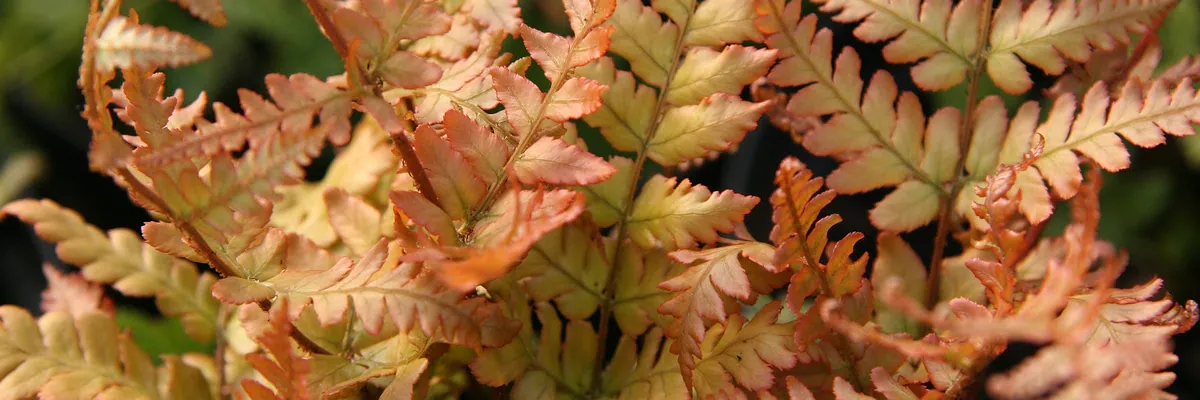

DRYOPTERIS erythrosora is a wonderful fern all year round and really stands out from other ferns. It is above all a form with evergreen foliage which is totally resistant to cold. The spring foliage starts out pink, then takes on an orange color (see photo) and ends up green. You can use it as a ground cover, given its low height (30 to 70 cm).
How to grow DRYOPTERIS erythrosora
Plant this fern in the shade of trees and shrubs in soil that stays moist in summer. However, DRYOPTERIS erythrosora tolerates drier soils than many other ferns. Especially avoid the afternoon sun. It grows in any type of soil and accepts all pH levels. Since it is an easy plant to grow, it is suitable for both beginners and experienced gardeners.
History and Origin
The genus DRYOPTERIS comprises about 300 to 400 species. Their natural habitats are in Asia, America, Europe, Africa and the Pacific Islands.
DRYOPTERIS hybridize easily.
They provide food for butterfly larvae and are used as ornamental plants in gardens. Such is the case for DRYOPTERIS erythrosora.
In addition, ferns are also used as organic fertilizer and to clean up polluted soil. Furthermore, they were the subject of research for their ability to eliminate certain atmospheric pollutants. Others can fix nitrogen or eliminate heavy metals such as arsenic from the soil.
DRYOPTERIS filix-mas was commonly used as a vermifuge. The Scandinavians utilized it to combat red lice.
Ferns appear in fossils from 360 million years ago. In contrast, many of today’s ferns are “only” 145 million years old.
Finally, New Zealand made fern its national emblem and prints a fern leave on its passports.


Leave a Reply